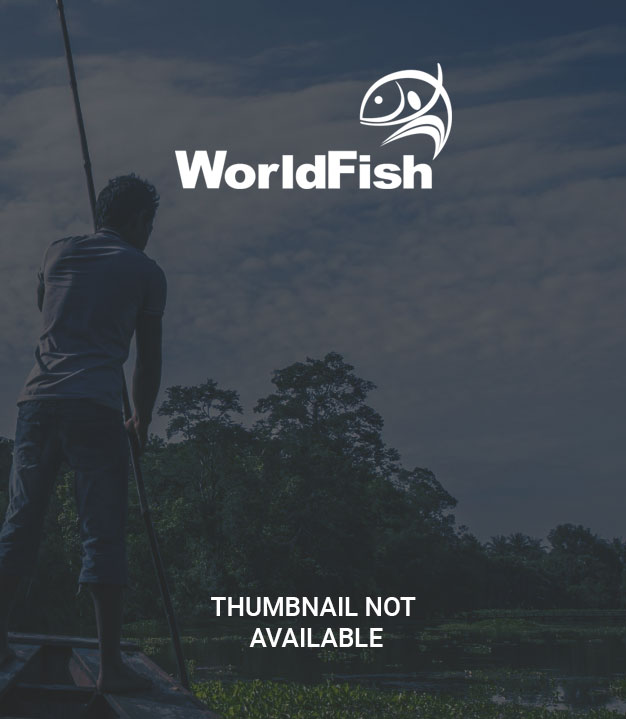
Better integration of intra-regional fish trade into nation-state policy agenda is reported as a tool for improving food and nutritional security; and poverty reduction in Africa. However, critical information on market structure and value of intra-regional fish trade needed to ensure food security in the West African corridor are very limited. This study therefore investigated the marketing nodes and structure for fish trade along Nigeria-Cameroon-Chad border. Akwa Ibom, Cross River, Benue, Taraba, Adamawa and Borno States along Nigeria-Cameroon Chad border were selected for this study. Snowball sampling technique was employed for data collection. The election of respondents was based on their involvement in fishing and fish marketing activities and their acceptance to provide the primary data for this research. Structured questionnaires were administered to 900 respondents comprising 300 producers, 300 processors and 300 marketers. The questionnaire was used to obtain data on socio-economic characteristics, marketing operations, market structure, fish distribution and cross border trade in the study area. Data were analysed using descriptive statistics, budgetary analysis, Herfindahl index, Gini coefficient, stochastic production frontier model, linear regression analysis and ANOVA at α0.05. The results of the study revealed that males 93.3% dominated the production node, while females dominated the processing (55.0%) and marketing (56.0%) nodes. Majority of the producers (34.3%), processors (34.0%) and marketers (39.7%) were within the age bracket of 41-50 years. Majority of the respondents were married; 87.7%, 88.3% and 85.3% and secondary school leavers; 31.7%, 40.7% and 43.7% and they Majority of the respondents were members of marketers’ associations; 51.3%, 65.7% and 67.7% with marketing experiences (> 15 years for producers, 11-15 years for processors and 6-10 years for marketers). The empirical findings on Gini coefficients for actors in fresh fish production node (0.63, 0.53) and marketing node (0.43, 0.43); smoked fish processing node (0.68) and marketing node (0.46, 0.39); dried fish processing node (0.69) and marketing node (0.51, 0.34) and frozen fish marketing node (0.36, 0.25) revealed an imperfect competitive market structure. Herfindahl index was highest for fresh (0.72), smoked (0.80) and dried (0.99) fish markets in Borno, Cross River and Adamawa States, respectively and frozen (1.00) fish markets in Akwa Ibom, Cross River and Borno States. Linear regression coefficient was positive in majority of the fish markets assessed. Processing node had the highest gross margin (₦371559.91±282965.56) and marketing margin (₦405394.09±392255.64), and marketing node had the highest marketing efficiency of 87.69±84.86. Fresh fish (564.13±552.27kg) was the highest volume of fish sold in intra-State marketing. The bulk of inter State and intra-regional inflow and outflow trade came from the quantity of fresh (1250.64±703.53kg and 1719.44±638.63kg, respectively) and dried (2098.00±306.88kg and 2205.11±987.43kg, respectively) fish products traded. The processing node is the most profitable, the marketing node is the most efficient of the fish marketing nodes identified, and the marketing participants in the various nodes exhibited partial inequality and equality in the share of their monthly revenue. Hence, people should be encouraged to go into fish marketing as a source of livelihood being an efficient business venture.